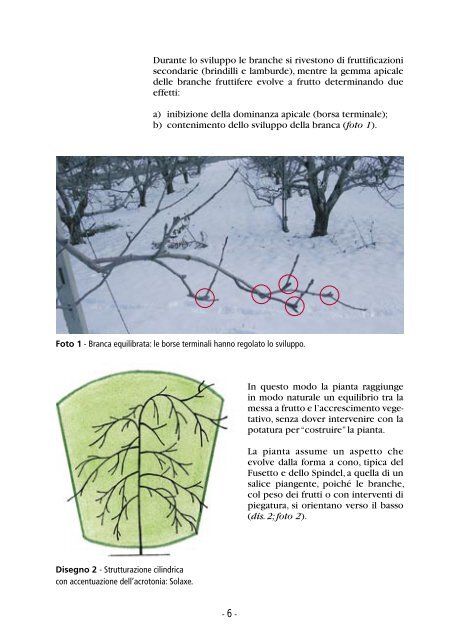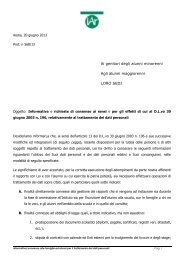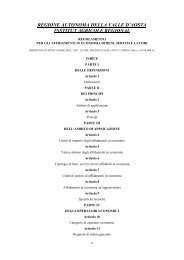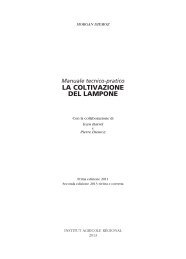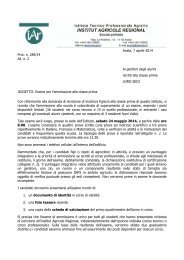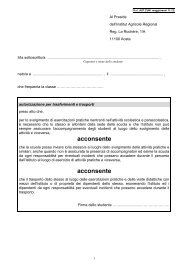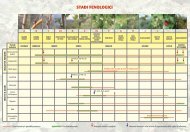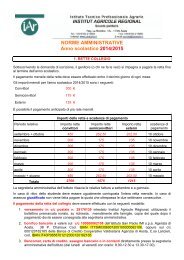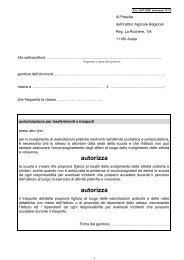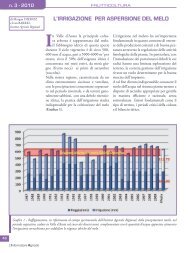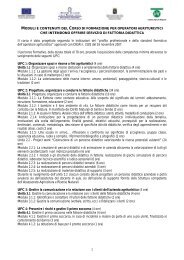il solaxe e la “conduite centrifuge” - Institut Agricole Régional
il solaxe e la “conduite centrifuge” - Institut Agricole Régional
il solaxe e la “conduite centrifuge” - Institut Agricole Régional
You also want an ePaper? Increase the reach of your titles
YUMPU automatically turns print PDFs into web optimized ePapers that Google loves.
Durante lo sv<strong>il</strong>uppo le branche si rivestono di fruttificazioni<br />
secondarie (brind<strong>il</strong>li e <strong>la</strong>mburde), mentre <strong>la</strong> gemma apicale<br />
delle branche fruttifere evolve a frutto determinando due<br />
effetti:<br />
a) inibizione del<strong>la</strong> dominanza apicale (borsa terminale);<br />
b) contenimento dello sv<strong>il</strong>uppo del<strong>la</strong> branca (foto 1).<br />
Foto 1 - Branca equ<strong>il</strong>ibrata: le borse terminali hanno rego<strong>la</strong>to lo sv<strong>il</strong>uppo.<br />
Disegno 2 - Strutturazione c<strong>il</strong>indrica<br />
con accentuazione dell’acrotonia: So<strong>la</strong>xe.<br />
- 6 -<br />
In questo modo <strong>la</strong> pianta raggiunge<br />
in modo naturale un equ<strong>il</strong>ibrio tra <strong>la</strong><br />
messa a frutto e l’accrescimento vegetativo,<br />
senza dover intervenire con <strong>la</strong><br />
potatura per “costruire” <strong>la</strong> pianta.<br />
La pianta assume un aspetto che<br />
evolve dal<strong>la</strong> forma a cono, tipica del<br />
Fusetto e dello Spindel, a quel<strong>la</strong> di un<br />
salice piangente, poiché le branche,<br />
col peso dei frutti o con interventi di<br />
piegatura, si orientano verso <strong>il</strong> basso<br />
(dis. 2; foto 2).


